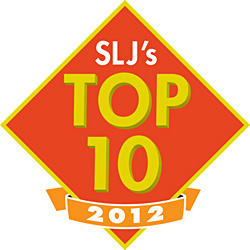
| More Top 10s |
| SLJ‘s Top 10 Apps |
| SLJ‘s Top 10 Graphic Novels |
| SLJ‘s Top 10 DVDs |
By Joyce Kasman Valenza
Shift happens. It disrupts. Next year, it’s critical for our profession to see opportunities where others might see obstacles. We can scout. We can innovate. We can harness disruption and lead. Or, we can opt out and let others do it instead.
This year’s shifts situate librarians for creative leadership opportunities, to make sense of the resources and tools that bombard our schools, and our public library partners, like that proverbial fire hose. Who better to curate and flip—and to ensure that learners have the tools they need 24/7? Who better to point teachers and learners to new platforms for growth and difference making? Who better to recognize the growing number of informal opportunities for learning as well as assessments that realistically recognize performance and skill acquisition? Who better to show learners that their work can have meaning and that, whatever their age, they can begin to shape their worlds?
It’s exciting. Let’s examine some of the stickier trends and trends-to-be and see where our opportunities are.
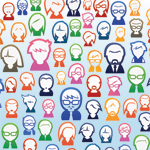 1. OPEN EDUCATIONAL RESOURCES/USER-GENERATED CONTENT. High-quality, open educational resources (OER) are proliferating and many are worthy of K–12 discovery. Bloggers, tweeters, and citizen journalists offer new real-time primary source perspectives. Major universities continue to change the nature of knowledge distribution and redefine opportunities for lifelong learning with their sharing. Social scholarship flourishes. I know, I’ve gotten excited about this before, but it’s simply richer now—ignoring this trend by not considering this content as part of your collection would be a tragic waste.
1. OPEN EDUCATIONAL RESOURCES/USER-GENERATED CONTENT. High-quality, open educational resources (OER) are proliferating and many are worthy of K–12 discovery. Bloggers, tweeters, and citizen journalists offer new real-time primary source perspectives. Major universities continue to change the nature of knowledge distribution and redefine opportunities for lifelong learning with their sharing. Social scholarship flourishes. I know, I’ve gotten excited about this before, but it’s simply richer now—ignoring this trend by not considering this content as part of your collection would be a tragic waste.
Opportunity: Pick a platform and curate OER resources important to your community—perhaps for instance, Common Core resources and strategies, perhaps pointing to the amazing new wealth of primary sources, or free documentary films.
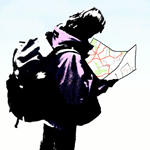 2. CURATION FOR DISCOVERABILITY. Our collections have too many entry points. Without serious curation efforts, those OER resources and the valuable, more traditional content we pay for will go undiscovered and unused. Our catalogs may no longer be adequate containers for the dynamic Web content, tools, instruction, ebooks, and media we need to share across vendors. Librarians need to step up and fuse together interfaces that make best stuff discoverable when and where learners and teachers need it.
2. CURATION FOR DISCOVERABILITY. Our collections have too many entry points. Without serious curation efforts, those OER resources and the valuable, more traditional content we pay for will go undiscovered and unused. Our catalogs may no longer be adequate containers for the dynamic Web content, tools, instruction, ebooks, and media we need to share across vendors. Librarians need to step up and fuse together interfaces that make best stuff discoverable when and where learners and teachers need it.
Opportunity: It’s not just about curating adult-created content. Kids create work worthy of celebrating and archiving. How about leading a school- or community-wide electronic portfolio movement? (See Helen Barrett’s work at electronicportfolios.org.)
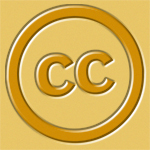 3. CREATIVE COMMONS. Students need to be aware of the Creative Commons (CC) movement, not merely as media consumers but as content creators. Kids can control how they’d like the text, art, music, and films that they produce to be reused or remixed. It’s up to us to ensure that our artists, filmmakers, and musicians consider applying CC licenses to their own works. This year, Creative Commons released a Choose a License wizard, clarifying that opportunity. All this glorious content inspires a variety of other trends.
3. CREATIVE COMMONS. Students need to be aware of the Creative Commons (CC) movement, not merely as media consumers but as content creators. Kids can control how they’d like the text, art, music, and films that they produce to be reused or remixed. It’s up to us to ensure that our artists, filmmakers, and musicians consider applying CC licenses to their own works. This year, Creative Commons released a Choose a License wizard, clarifying that opportunity. All this glorious content inspires a variety of other trends.
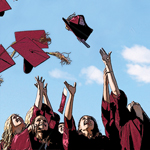 4. MOOCS ARE BUSTING OUT. This may have been the year of the MOOC (massive open online course). The dramatic proof was a fall 2011 artificial intelligence course, which drew 160,000 students—followed by the launch of higher-ed courses on the Coursera platform, MIT’s MITx and Harvard’s edX. I participated in Google’s international Power Searching MOOC last summer. Many predict the MOOC movement will trickle down to K–12 schools. There’s no stopping older students from joining in.
4. MOOCS ARE BUSTING OUT. This may have been the year of the MOOC (massive open online course). The dramatic proof was a fall 2011 artificial intelligence course, which drew 160,000 students—followed by the launch of higher-ed courses on the Coursera platform, MIT’s MITx and Harvard’s edX. I participated in Google’s international Power Searching MOOC last summer. Many predict the MOOC movement will trickle down to K–12 schools. There’s no stopping older students from joining in.
Opportunity: Search for MOOC s and point teachers and learners to strong opportunities for informal learning.
And, it seems, where there’s a MOOC, there’s often a badge.
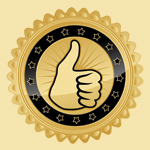 5. DIGITAL LEARNING BADGES. Perhaps in response to measures of achievement that don’t really measure, well, real achievement, digital badges recognize skills and accomplishments that get developed online. Badges nod to those other-talented students who don’t get recognized for their touchdowns or AP scores. Badges follow learners when they leave the K–12 system, and come encoded with metadata to explain their value. Learners/users can then collect and share badges, potentially marketing themselves for future career and learning opportunities.
5. DIGITAL LEARNING BADGES. Perhaps in response to measures of achievement that don’t really measure, well, real achievement, digital badges recognize skills and accomplishments that get developed online. Badges nod to those other-talented students who don’t get recognized for their touchdowns or AP scores. Badges follow learners when they leave the K–12 system, and come encoded with metadata to explain their value. Learners/users can then collect and share badges, potentially marketing themselves for future career and learning opportunities.
Opportunity: Scout for badge opportunities that match and recognize your students’ independent learning passions.
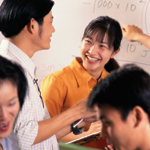 6. FLIPPING. Flipping the classroom changes the place in which content is delivered. If a teacher assigns instruction—in the form of video, simulations, slidecasts, readings, and podcasts—as homework, then class time can become interactive. Flipping frees the class for face-to-face critical thinking, exploration, inquiry, discussion, collaboration, and problem solving. Flipping is a sweet spot for the talents of librarians, who can lead the professional development involved in curating high-quality resources and creating digital instruction. We need to flip our libraries too, and mobilize them for the many users who access their information largely on phones and tablets.
6. FLIPPING. Flipping the classroom changes the place in which content is delivered. If a teacher assigns instruction—in the form of video, simulations, slidecasts, readings, and podcasts—as homework, then class time can become interactive. Flipping frees the class for face-to-face critical thinking, exploration, inquiry, discussion, collaboration, and problem solving. Flipping is a sweet spot for the talents of librarians, who can lead the professional development involved in curating high-quality resources and creating digital instruction. We need to flip our libraries too, and mobilize them for the many users who access their information largely on phones and tablets.
Opportunity: Support a favorite teacher by helping her flip the lecture she least enjoys teaching!
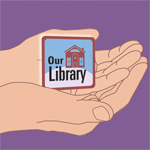 7. PORTABILITY. My dream is that every kid in America will have a library in his or her pocket or tucked in a sleeve. If your school is working toward BYOD (bring your own devices) or a one-to-one program, this has got to be on your radar—no excuses. We should be involved in selecting apps for learners, and we should be driving the reinterpretation of the library for the phone or tablet. It’s time for all of us not only to have virtual libraries, but to have mobile sites or apps.
7. PORTABILITY. My dream is that every kid in America will have a library in his or her pocket or tucked in a sleeve. If your school is working toward BYOD (bring your own devices) or a one-to-one program, this has got to be on your radar—no excuses. We should be involved in selecting apps for learners, and we should be driving the reinterpretation of the library for the phone or tablet. It’s time for all of us not only to have virtual libraries, but to have mobile sites or apps.
Opportunity: Let your students help build your app or mobile site. Even younger students can help determine what resources they most need to have in their pockets 24/7.
 8. COLLABORATION AND CONNECTION. Kids are comfortable in the cloud. Whether it’s working on a story, script, survey, or presentation, students and their teachers collaborate automatically. Google Apps illustrates how ridiculous it is that other tools require individual logins, won’t accept group participation, and won’t move with users across devices. Professionally, TL Cafe thrives, and this year the #tlchat hashtag went live.
8. COLLABORATION AND CONNECTION. Kids are comfortable in the cloud. Whether it’s working on a story, script, survey, or presentation, students and their teachers collaborate automatically. Google Apps illustrates how ridiculous it is that other tools require individual logins, won’t accept group participation, and won’t move with users across devices. Professionally, TL Cafe thrives, and this year the #tlchat hashtag went live.
Opportunity: Be the go-to resource for linking classrooms with other classrooms, authors, and experts. Lead in setting up learning events via Twitter, Skype, Google+ Hangouts, or Elluminate.
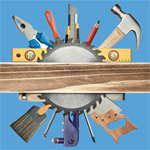 9. MAKERSPACES/LEARNING COMMONS.Inspired by the Digital Youth Project and Henry Jenkins’s work on participatory culture, many of us are recreating our physical spaces. This, of course, dovetails with our rethinking of the space required by print and the place creation plays as the end result of research or play. It seems to me a perfect storm. Libraries are evolving as makerspaces (aka hackerspaces or fablabs)—flexible, collaborative spaces that foster playful design and creation.
9. MAKERSPACES/LEARNING COMMONS.Inspired by the Digital Youth Project and Henry Jenkins’s work on participatory culture, many of us are recreating our physical spaces. This, of course, dovetails with our rethinking of the space required by print and the place creation plays as the end result of research or play. It seems to me a perfect storm. Libraries are evolving as makerspaces (aka hackerspaces or fablabs)—flexible, collaborative spaces that foster playful design and creation.
Opportunity: Dedicate an area of your existing space as a makerspace. Ask students to help you run making workshops for the faculty during lunches.
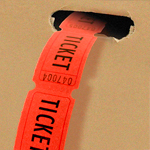 10. KID POWER. We witnessed the power and agency of children who used social media to have their say and command the world’s attention. Nine-year-old Caine, for example, built a cardboard arcade that inspired boys and girls around the world. Malala Yousafzai, a Pakistani girl from Swat Valley, leveraged the media to advance education for girls. After Taliban gunmen shot and wounded Malala in October, UN Secretary General Ban Ki-moon declared November 10 as Malala Day, a global symbol of every girl’s right to an education.
10. KID POWER. We witnessed the power and agency of children who used social media to have their say and command the world’s attention. Nine-year-old Caine, for example, built a cardboard arcade that inspired boys and girls around the world. Malala Yousafzai, a Pakistani girl from Swat Valley, leveraged the media to advance education for girls. After Taliban gunmen shot and wounded Malala in October, UN Secretary General Ban Ki-moon declared November 10 as Malala Day, a global symbol of every girl’s right to an education.
With the support of mentors from the First Light organization, British school girls raised awareness of the underground practice of genital mutilation (FGM) in the U.K. with their compelling documentary, Silent Scream.
Opportunity: Share this story (and the ones above) of kids making a difference with your own kids. Use them as an inspiration for creating meaningful future projects.
11. BIG DATA. Possibly best known as the intelligence behind recommendation engines or the Human Genome project, Big Data was abuzz in 2012. Politicians exploited it. Examples include the Google Crisis Map; the One Million Tweet Map, which analyzes who’s tweeting what and where; and GapMinder (www.gapminder.org), which demonstrates global trends through data and promotes using statistics to develop a fact-based world view. Big data fosters problem solving in the form of computational thinking, a literacy that we librarians seldom explore.
Opportunity: Encourage your students and teachers to be data scientists. Examine large datasets and tell stories about them using infographics.


